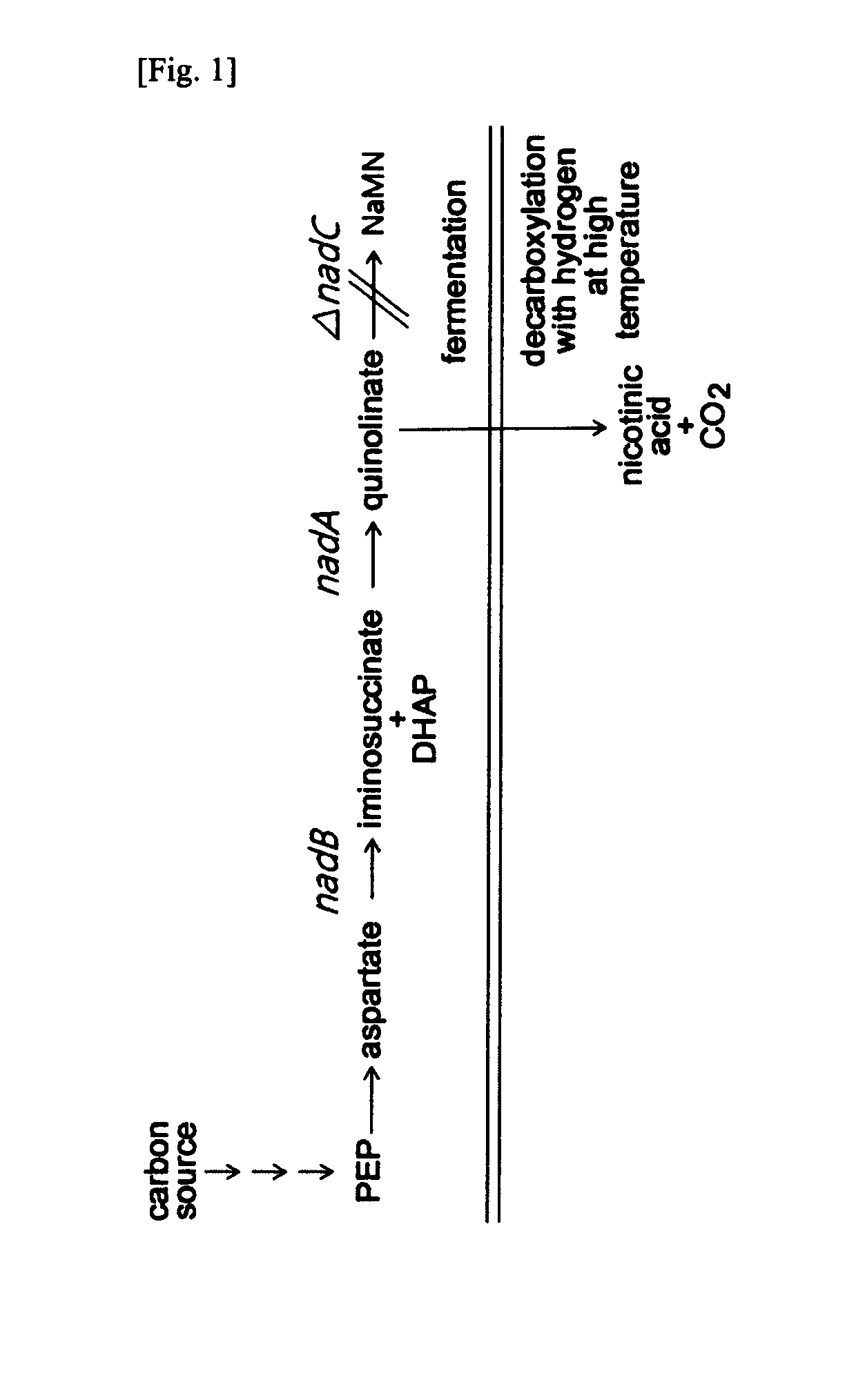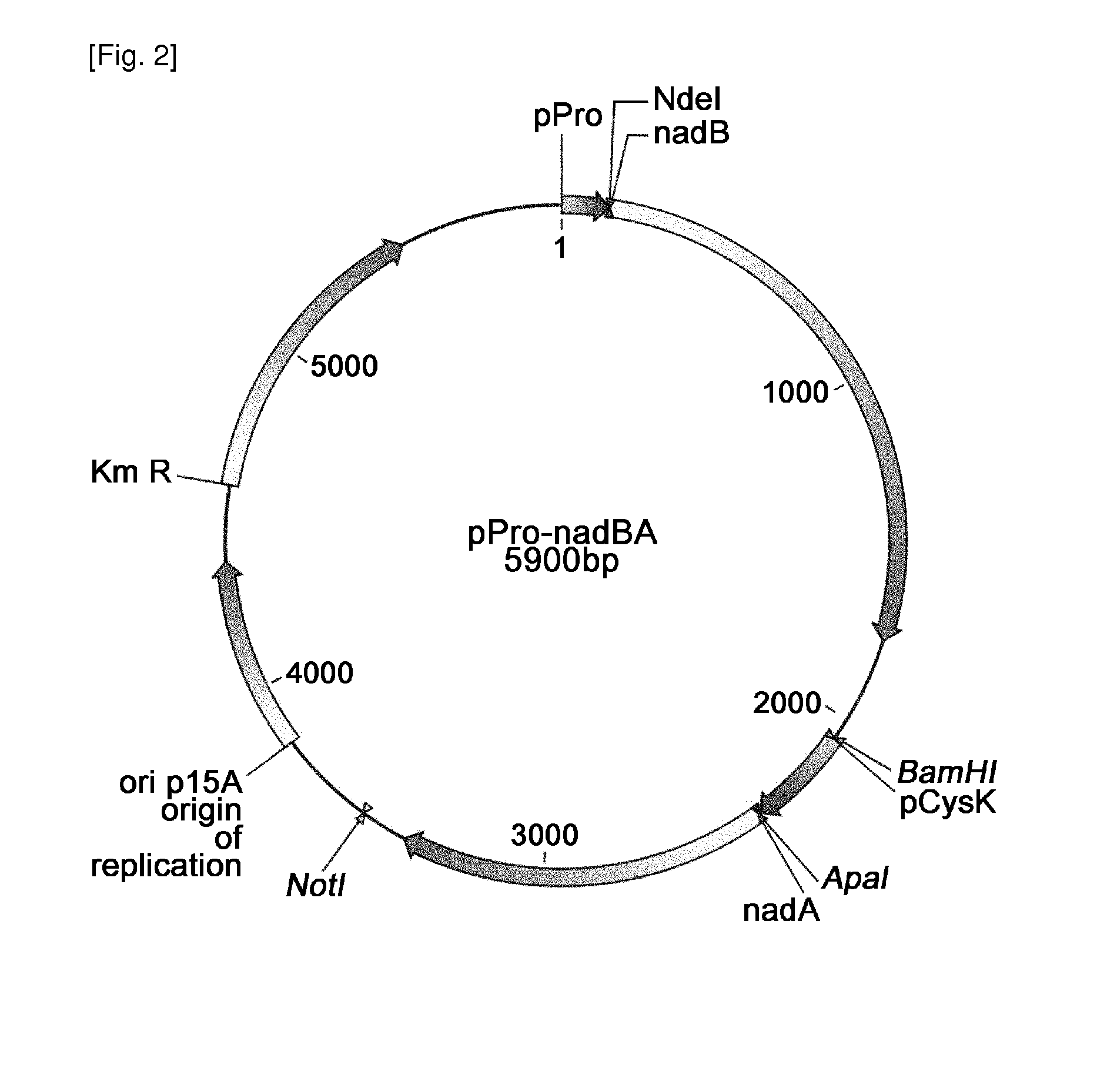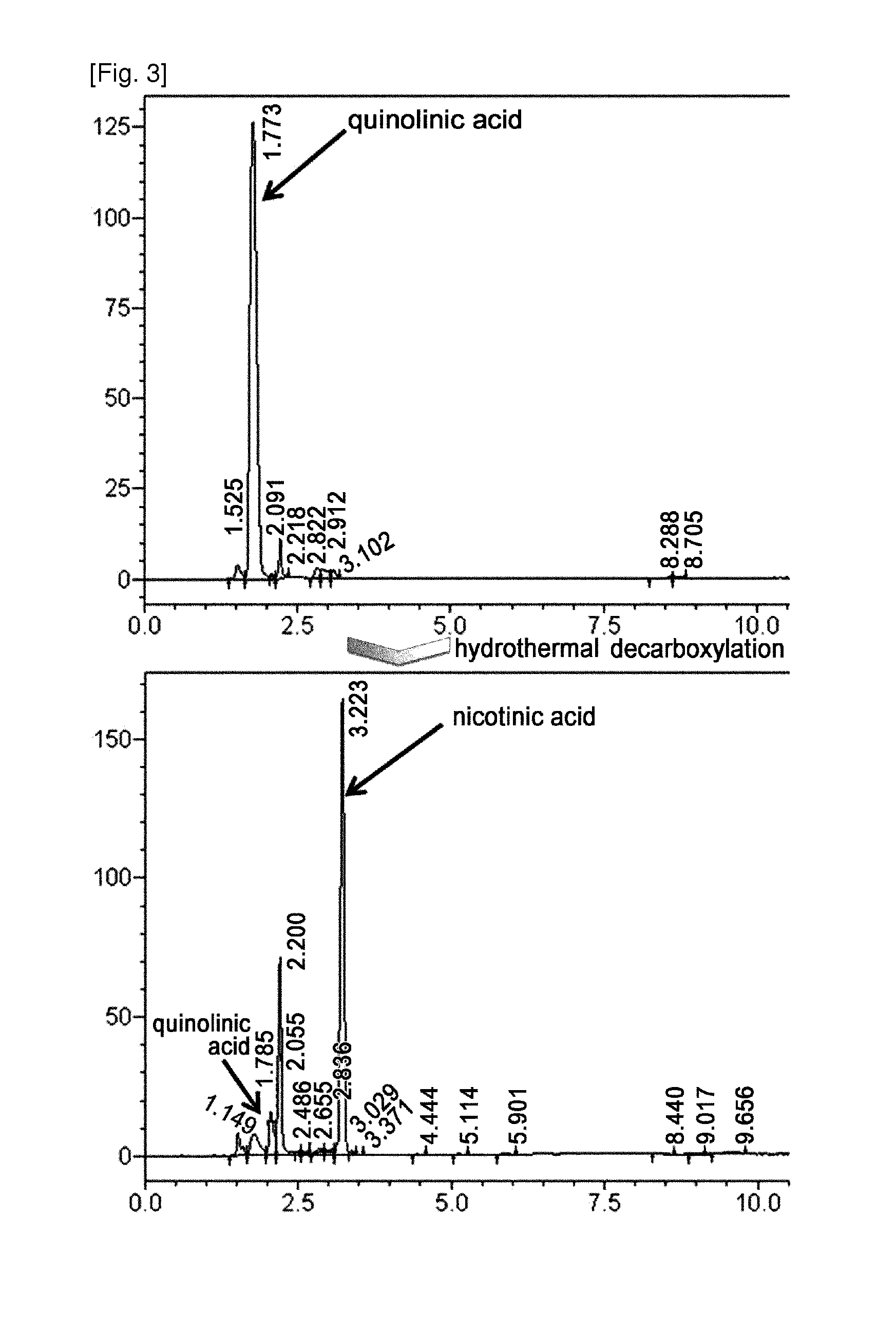Method for the preparation of nicotinic acid
a technology of nicotinic acid and nicotinic acid, which is applied in the field of preparing nicotinic acid, can solve the problems of pellagra disease or neuropathies, need of thorough management, and high cost of waste disposal, and achieves low cost and high energy.
- Summary
- Abstract
- Description
- Claims
- Application Information
AI Technical Summary
Benefits of technology
Problems solved by technology
Method used
Image
Examples
example 1
Preparation of Quinolinic Acid-Producing Strain
[0063]1-1. Construction of plasmid for expression of aspartate oxidase
[0064]The gene nadB coding for aspartate oxidase was obtained through PCR using chromosomal DNA of Escherichia coli W3110 as the template. On the basis of the base sequence for the nadB gene (NCBI Registration No. “GI:89109380”) of SEQ ID NO: 13 obtained from the GenBank of the National Institute of Health (NIH GenBank), the ATG region and ORF region containing the TAA in nadB gene could be amplified, and primers of SEQ ID NOs: 1 and 2 having the recognition sites of restriction enzymes NdeI and BamHI were synthesized.
[0065]PCR was conducted using chromosomal DNA of Escherichia coli W3110 as the template and oligonucleotides of SEQ ID NOs: 1 and 2 as the primer. PfuUltra™ DNA polymerase (Stratagene) was used as the polymerase, and PCR was conducted by repeating the cycle 30 times comprising denaturation at 96° C. for 30 seconds, annealing at 50° C. for 30 seconds and ...
example 2
Preparation of Nicotinic Acid
[0080]2-1. Production of Quinolinic Acid
[0081]The strain producing quinolinic acid as prepared in Example 1 was incubated in LB-Km plating medium within the incubator at 37° C. overnight to obtain a single colony, which was then inoculated on 25 ml of quinolinic acid titer medium by 1 platinum loop and incubated with 250 rpm at 37° C. for 24 to 72 hours. The following Table 1 shows the composition of the medium for producing quinolinic acid.
TABLE 1CompositionConc. (per L)Glucose70gAmmonium Sulfate17gKH2PO41.0gMgSO4•7H2O0.5gFeSO4•7H2O5mgMnSO4•8H2O5mgZnSO45mgCalcium carbonate30gYeast extract2gMethionine0.15g
[0082]Quinolinic acid in the culture solution was analyzed by HPLC. The result of analysis is shown in the following Table 2, and indicates the ability of the strain to produce quinolinic acid.
TABLE 2StrainsPlasmidsQuinolinic acid (g / L)W3110—Not Detected (ND)pPro-nadBANDW3110ΔnadC—NDpPro-nadBA0.4TF4076—NDpPro-nadBANDTF4076ΔnadC—0.1pPro-nadBA5.5
[0083]As ...
PUM
 Login to View More
Login to View More Abstract
Description
Claims
Application Information
 Login to View More
Login to View More - R&D
- Intellectual Property
- Life Sciences
- Materials
- Tech Scout
- Unparalleled Data Quality
- Higher Quality Content
- 60% Fewer Hallucinations
Browse by: Latest US Patents, China's latest patents, Technical Efficacy Thesaurus, Application Domain, Technology Topic, Popular Technical Reports.
© 2025 PatSnap. All rights reserved.Legal|Privacy policy|Modern Slavery Act Transparency Statement|Sitemap|About US| Contact US: help@patsnap.com



